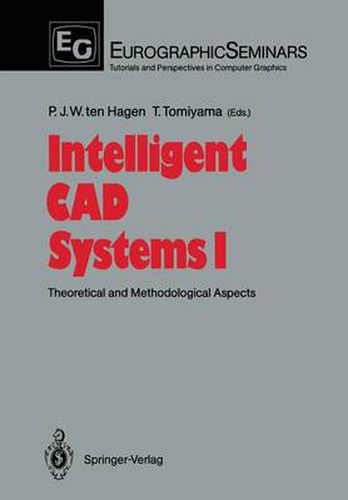Readings Newsletter
Become a Readings Member to make your shopping experience even easier.
Sign in or sign up for free!
You’re not far away from qualifying for FREE standard shipping within Australia
You’ve qualified for FREE standard shipping within Australia
The cart is loading…






This title is printed to order. This book may have been self-published. If so, we cannot guarantee the quality of the content. In the main most books will have gone through the editing process however some may not. We therefore suggest that you be aware of this before ordering this book. If in doubt check either the author or publisher’s details as we are unable to accept any returns unless they are faulty. Please contact us if you have any questions.
CAD (Computer Aided Design) technology is now crucial for every division of modern industry, from a viewpoint of higher productivity and better products. As technologies advance, the amount of information and knowledge that engineers have to deal with is constantly increasing. This results in seeking more advanced computer technology to achieve higher functionalities, flexibility, and efficient performance of the CAD systems. Knowledge engineering, or more broadly artificial intelligence, is considered a primary candidate technology to build a new generation of CAD systems. Since design is a very intellectual human activity, this approach seems to make sense. The ideas of intelligent CAD systems (ICAD) are now increasingly discussed everywhere. We can observe many conferences and workshops reporting a number of research efforts on this particular subject. Researchers are coming from computer science, artificial intelligence, mechanical engineering, electronic engineering, civil engineering, architectural science, control engineering, etc. But, still we cannot see the direction of this concept, or at least, there is no widely accepted concept of ICAD. What can designers expect from these future generation CAD systems? In which direction must developers proceed? The situation is somewhat confusing.
$9.00 standard shipping within Australia
FREE standard shipping within Australia for orders over $100.00
Express & International shipping calculated at checkout
This title is printed to order. This book may have been self-published. If so, we cannot guarantee the quality of the content. In the main most books will have gone through the editing process however some may not. We therefore suggest that you be aware of this before ordering this book. If in doubt check either the author or publisher’s details as we are unable to accept any returns unless they are faulty. Please contact us if you have any questions.
CAD (Computer Aided Design) technology is now crucial for every division of modern industry, from a viewpoint of higher productivity and better products. As technologies advance, the amount of information and knowledge that engineers have to deal with is constantly increasing. This results in seeking more advanced computer technology to achieve higher functionalities, flexibility, and efficient performance of the CAD systems. Knowledge engineering, or more broadly artificial intelligence, is considered a primary candidate technology to build a new generation of CAD systems. Since design is a very intellectual human activity, this approach seems to make sense. The ideas of intelligent CAD systems (ICAD) are now increasingly discussed everywhere. We can observe many conferences and workshops reporting a number of research efforts on this particular subject. Researchers are coming from computer science, artificial intelligence, mechanical engineering, electronic engineering, civil engineering, architectural science, control engineering, etc. But, still we cannot see the direction of this concept, or at least, there is no widely accepted concept of ICAD. What can designers expect from these future generation CAD systems? In which direction must developers proceed? The situation is somewhat confusing.